Text
Article from The Conversation on our Chicano Park research.
Urban wellbeing is increasingly tied to what urban planners term “green” and “blue” spaces: the parks and waterfronts that our towns and cities may include. Residents are also encouraged to leave the city altogether, to seek out the healthy calm of forest bathing, fell running or cold water swimming.
The potential of play within the urban environment, however, is often overlooked.
Skateboarders have long been invested in what I call “grey” space: the overlooked corners, edges and surfaces of the built environment. Skateboard magazines and videos routinely explore the social and architectural histories of sets of stairs and stone benches.
These spots, largely invisible to the general public, are richly symbolic. In seeing them as ramps and launchpads, skaters transform unremarkable bits of the city into ritual places of magic and wonder.
Recent research conducted with my colleague, Andrea Buchetti, shows that skateparks are sites of unstructured play and community, as well as remembrance and ritual. Otherwise banal and polluted locations are afforded layers of meaning and depth.
Skatepark memorialisation
The Chicano Park skatepark in San Diego is nestled below the imposing, blocky concrete columns of the on-ramps for the city’s Coronado bridge.
Built in 2015, the skatepark features four vibrant murals (by artists including Ricardo Islas) that draw on both the indigenous heritage of this ancient northern Mexican region and skateboard iconography. In memory of lost friends, local skateboarders build shrines at the foot of the paintings using broken skateboards, rocks, cacti and cut flowers.
The five-lane highway bridge above it stands 61 metres tall, allowing safe passage for ships bound to the nearby naval base. Completed in 1969, it links downtown San Diego with the smaller city of Coronado across San Diego Bay.
The space beneath the bridge has long been contested. When built, its route divided a longstanding Mexican American neighbourhood, Barrio Logan, that had already been disrupted by the construction of the Interstate 5 in 1963. Over 5,000 homes and businesses were destroyed in the process.
The state had promised the community a park by way of compensation. But on April 22 1970, Mario Solis, a local student, noticed bulldozers where the park should be, and found out the city was, in fact, constructing a highway patrol base there.
At Solis’s urging, more than 250 residents gathered with shovels and pickaxes to reclaim the land. They planted cacti and trees to create a communal park. After three months of protest, the city conceded to work with the community, and Chicano Park was officially established.
Local artist Salvador Torres was one of the people who lost their homes. In 1973, he galvanised the community into painting murals on the imposing chunks of concrete built in their stead. It was a form of creative resistance. The motifs referenced the cultural heritage of this ancient northern Mexican region, from Aztec symbolism to indigenous plants and beasts, and also Mexico’s colonial experience and revolutionary struggles.
The park is now a protected historic space and landmark. People gather there for annual celebrations on April 22.
Skateboarding as culture and community
Research has long shown the connection between sport and religion. Fans make pilgrimages to stadiums and worship athletes like gods.
Just as a football fan might worship at Wembley stadium in London, a specific neighbourhood curb might hold great significance because of a connection to a famous skater or a historic event. I have shown how skateboarding functions as a lifestyle religion. In the way they observe, perform and organise their communal activity, skateboarders derive spiritual expression and identity from both the physical act of skateboarding and the places in which it is conducted.
Some skateparks have dedicated plaques and permanent memorials designed into skateable features. When legendary San Francisco skateboarder and chief-editor of Thrasher magazine, Jake Phelps, died in 2019, a sculptor in Los Angeles made a concrete tombstone feature to install in the Lower Bob’s DIY skatepark in Oakland. He mixed some used dental floss Phelps had left behind into the concrete. “We don’t got his cremated body,” the artist told Thrasher, “but we got pretty much all the DNA we’re gonna need.”
London’s Skateboard Graveyard on one of the supports of Hungerford Bridge, on the South Bank, is another salient example. For years now, old boards have been thrown down from the Golden Jubilee footbridge in memory of Timothy Baxter, one of two skaters who were attacked and thrown into the river Thames in 1999.
Baxter died as a result and the juvenile attackers were convicted of manslaughter. Many of the skateboarders who take part in the ritual might not know that this is how it began, yet they persist in offering their broken boards to the site.
RIP epitaphs
In 2023, the skatepark in Sacramento’s Regency Park was renamed in honour of Tyre Nichols, a skateboarder who was beaten to death by police officers in Memphis, Tennessee.
Australian graphic design expert Dan Johnston has identified RIP epitaphs as one of the most common types of skateboarding-related graffiti. He cites messages he has noted on the steel ramps and concrete bumps of skater desinations in Singapore, Paris and south Australia – RIPs and Miss Us scrawled in white correction fluid, marker pen or spray paint.
Despite skateboarding’s recent ascent to Olympic status, for many skateboarders it is more a culture – or even a cult – than a sport. It brings diverse people together for unsanctioned play, recasting obstacles – an impassable buckled road in Wiltshire, say – as toys and tools.
In their provocative curves and surfaces, skateparks embody this creativity. They mimic the city beyond, showing how the built environment cannot just be conceived of as a framework for economic activity. Grey space – and grey times – can be transformed if communities, and the DIY cultures they give birth to, are allowed to flourish in the city.
1 note
·
View note
Text
New article published with Andrea Buchetti on Chicano Park's Skateboard Murals. This draws upon the ways in which the murals have become sites of memorial for local skaters who have died in the community.
Open Access and free to download... here

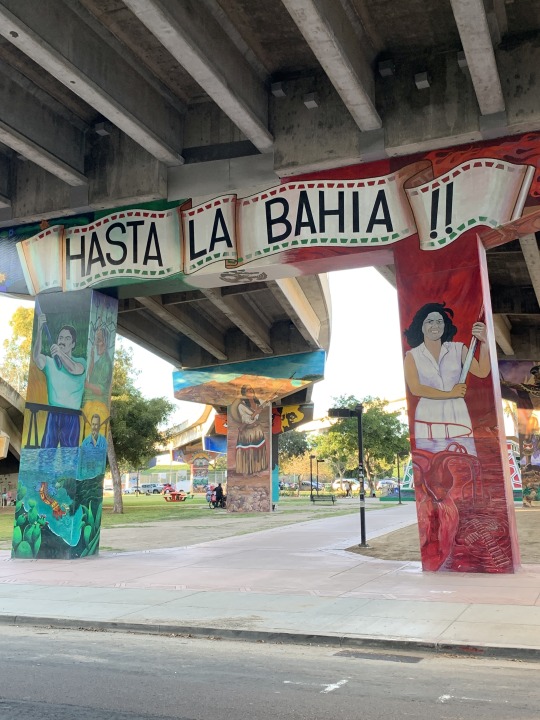
#skateboarding#anthropology#sociology#sacred space#sacred places#skateboarding and religion#chicano park#San Diego#research paper
0 notes
Text
I gave talk for the SSHRED seminar series in early February conceptualising 'Grey Spaces' in academic work on skateboarding. This coincides with a Special Issue we are planning for Leisure Studies Journal. The Call for Papers can be found here...
youtube

2 notes
·
View notes
Text
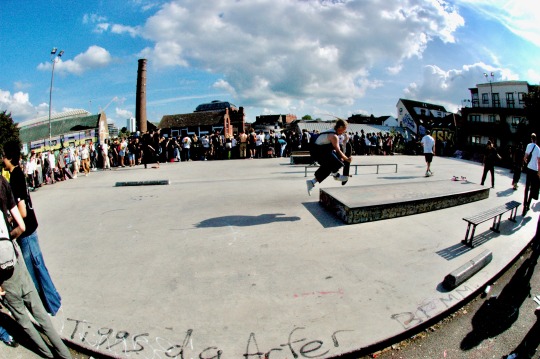
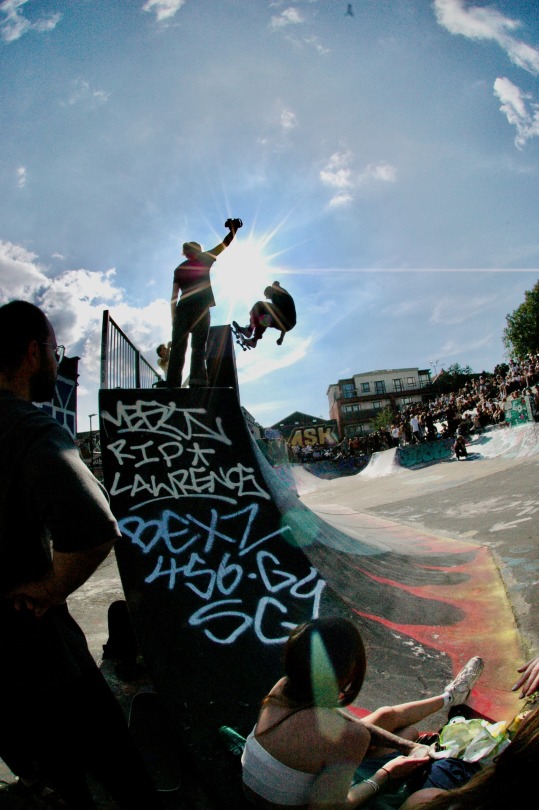

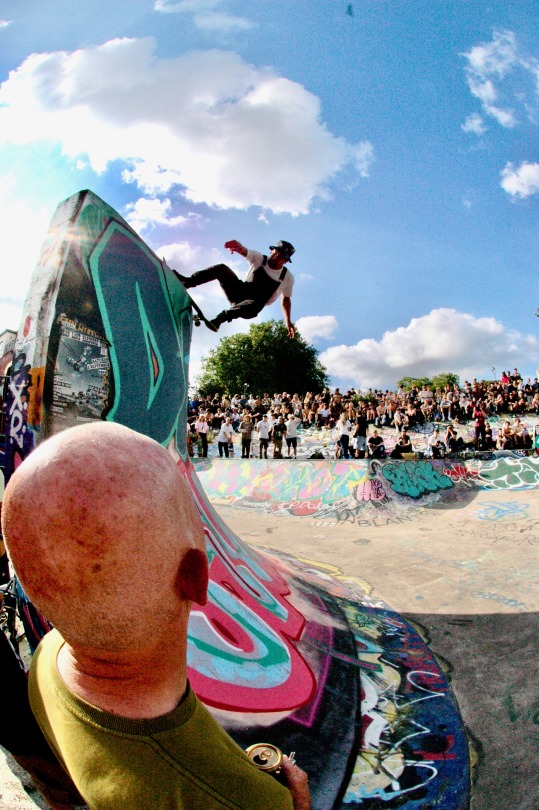
Dean Lane Fun Day, Bristol Saturday September 2nd 2023
3 notes
·
View notes
Text
First of all, the egalitarian ethos and pronounced color-blindness of pugilistic culture are such that everyone is fully accepted into it so long as he submits to the common discipline and "pays his dues" in the ring.
Loïc Wacquant Body and Soul: Notebooks of an apprenctice boxer. (2004) Pg 10
0 notes
Text
“I came across Sidewalk Surfer magazine - a leading British skateboarding publication at the time. I was drawn to the image on the cover of a man mid-trick hovering above the ground. He had been photographed in the glow of a streetlight in an urban space empty of people. I saw the image as extremely seductive; it suggested magic, a sort of urban alchemy, and it represented an expansive freedom and open space. I bought the magazine and asked my parents for a skateboard for my 16th birthday along with a 411 video about ‘How to Skateboard’.”
Dani Abulhawa. Skateboarding and femininity. Pg12
3 notes
·
View notes
Photo

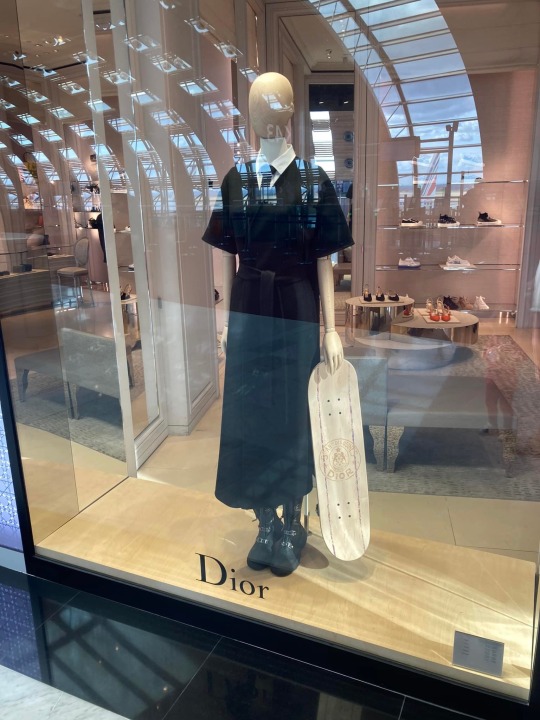
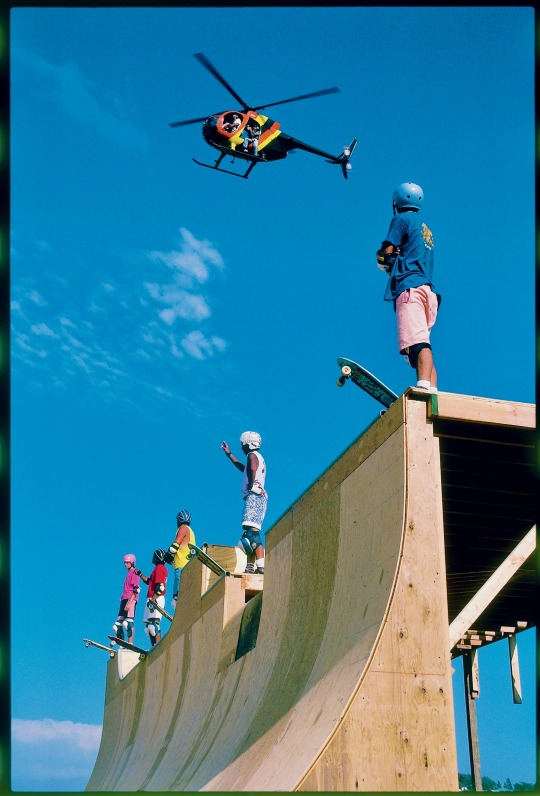
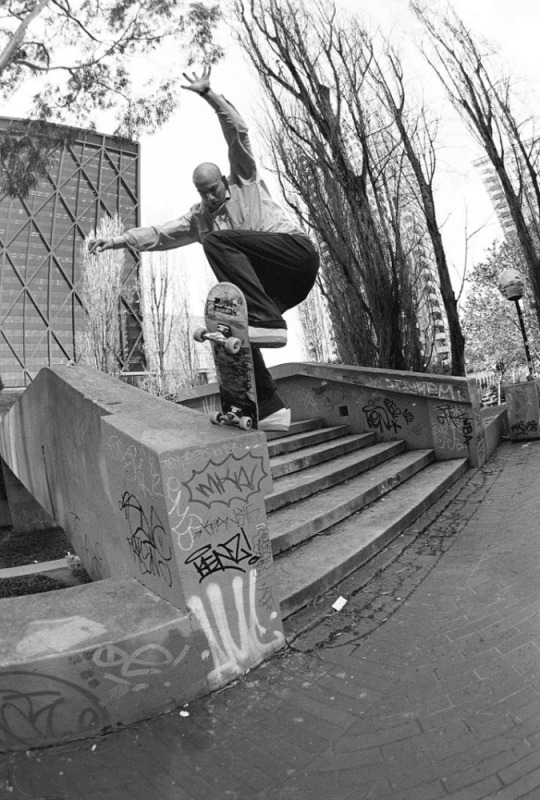
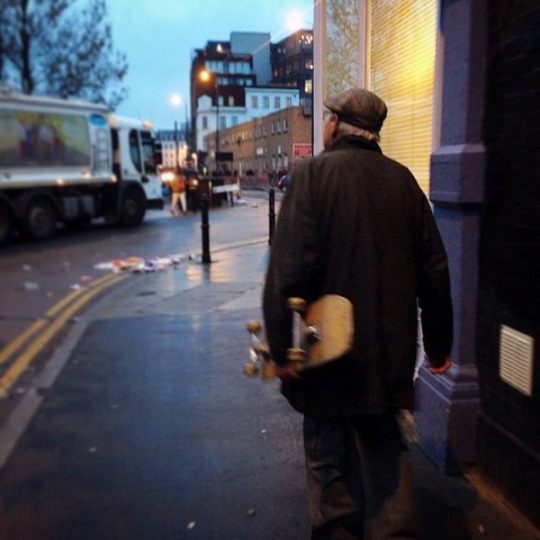


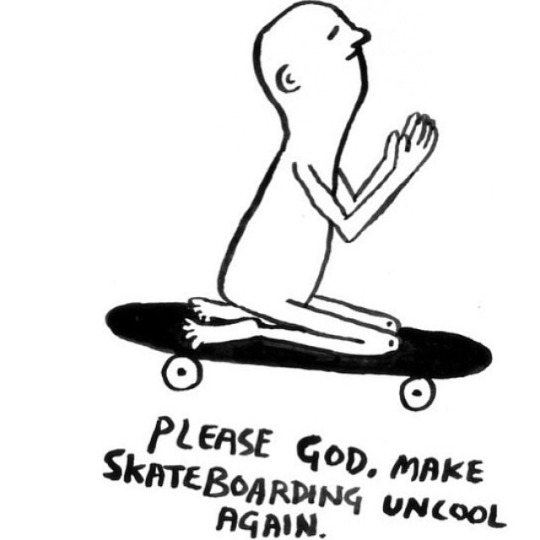


Just browsing through my archives. A selection.
16 notes
·
View notes
Quote
Balchin's Rowntree conference paper looks at the issue of time-wasting. He begins by pronouncing himself to be an expert on the subject, and then challenges his object to define exactly what they mean by 'wasting time'. He points out that activity does not always result in productivity, and that different people work at different speeds and in different ways. Just because someone doesn't appear to be active doesn't mean they are not productive. 'The really important sources of waste time are not the gross and obvious ones', Balchin says, 'but those which are subtle and insidious.'
The Rowntree Business Lectures and the Interwar British Management Movement https://rowntree.exeter.ac.uk/items/show/6
1 note
·
View note
Link
More from our research on ‘Skateboarding in the Anthropocene’.
Check out the article in Huck Magazine Here.
I spoke to Sam Haddad along with a group of colleagues, Clifton Evers, Indigo Willing and some of the good work taking place with Skate Nottingham, Skateboard GB, Shred the North, and the Wasteland DIY.
Also check out https://sshredblog.wordpress.com/

Illustration © Emma Balebela
0 notes
Photo

Research Notes: Developing and testing a protocol to systematically assess social interaction with urban outdoor environment.
https://www.sciencedirect.com/science/article/pii/S0272494423000567
1 note
·
View note
Quote
The difference between winning and losing in sport and the dominance of the win-at-all- costs approach could not be much more explicit than it is in the Olympics. This is the model of elite sport that we have come to accept, and one which affects youth sport and physical education, but the introduction of skateboarding at the 2020 Olympics bucked the trend by offering an attractive alternative. After the intensity of gymnastics, skateboarding presented a remarkable contrast for us, something that the Sydney Morning Herald described as a “joyous show of solidarity.” With participants very young, the camaraderie and joy expressed by winners and losers, and the empathy evident between them, it reminded us of what sport could, and should, be like. What struck us most was the joy of participation and the positive relationships between the competitors. We also noted the absence of animosity or fake friendliness and genuine support for any “losers” in a sport with a culture of mutual support. It was a pleasure to watch, and provided much needed hope for the Olympics, and sport in general. It also got us thinking about youth/community sport and physical education.
Teaching Physical Education for Happiness and Well-Being https://www.proquest.com/docview/2781019934/fulltextPDF/74514E402961464DPQ/
39 notes
·
View notes
Photo

Iain Borden brought this to attention...
https://www.theguardian.com/sport/2021/aug/10/our-readers-favourite-tokyo-olympics-moments
12 notes
·
View notes
Photo

Infographic: Skateboarding in the Anthropocene
I really love this Graphic Facilitation by Fanny Didou for my recent research paper ‘Skateboarding in the Anthropocene’ with Clifton Evers, Brian Glenney, and Indigo willing. It was supported by the University of Exeter’s Green Futures Network.
The infographic covers the key themes of the paper as prompts for further discussion.
The Open Access version of the published paper is published here https://www.tandfonline.com/doi/full/10.1080/02614367.2022.2153906
Also a less academic blog post on the research can be accessed here https://medium.com/@p.j.oconnor/concerning-grey-spaces-contradictions-and-conceits-of-urban-leisure-3e507b83bd23
4 notes
·
View notes
Text
“Everything is engaging, or can be made so. There is no part of the social world that will remain boring after the application of a little curiosity.” Rock (2001: 32)
1 note
·
View note
Link
1 note
·
View note
Link
It came to my attention that this recap of an interview I did last January on BBC5Live with Sarah Brownlow has been receiving renewed attention. I don’t think I posted it before... so here it is now.
#skateboarding#skateboarding mental health#skateboarding older skateboarders#sociology of skateboarding
6 notes
·
View notes